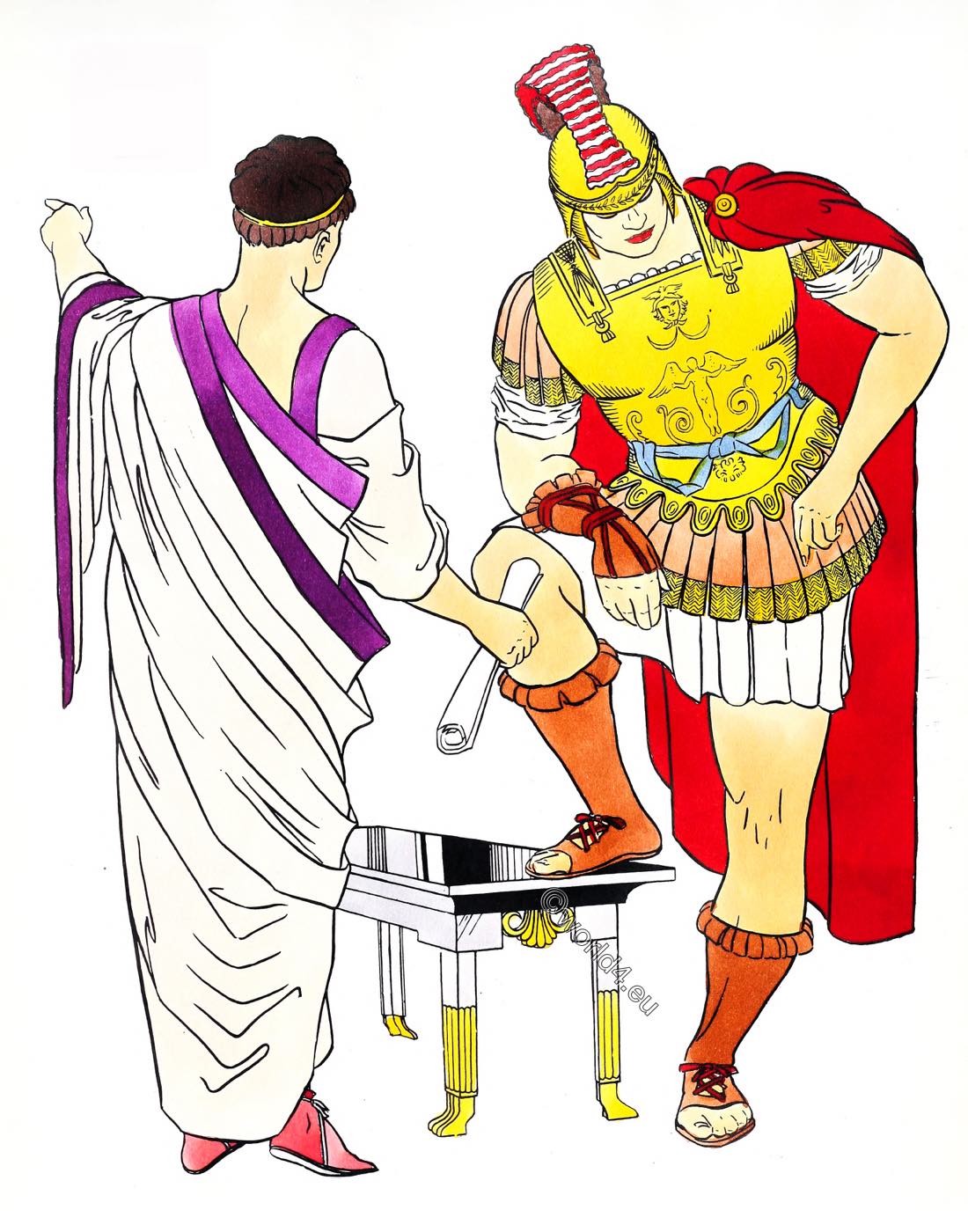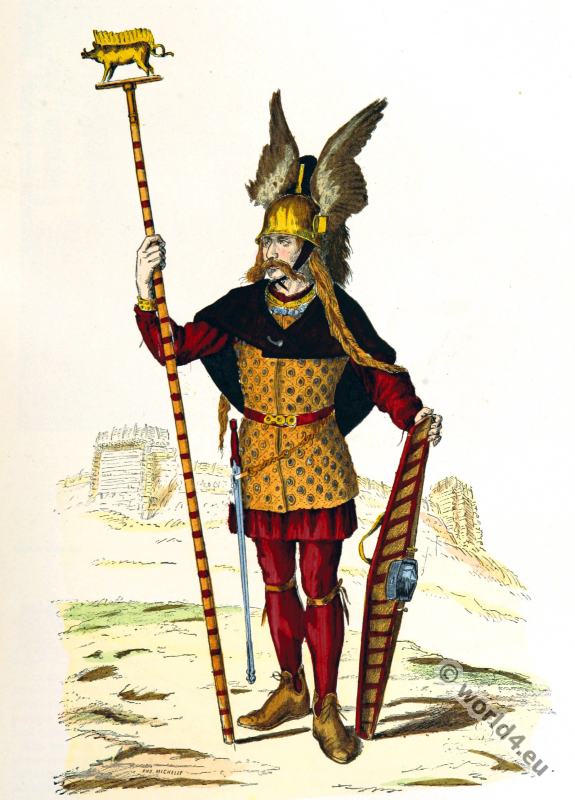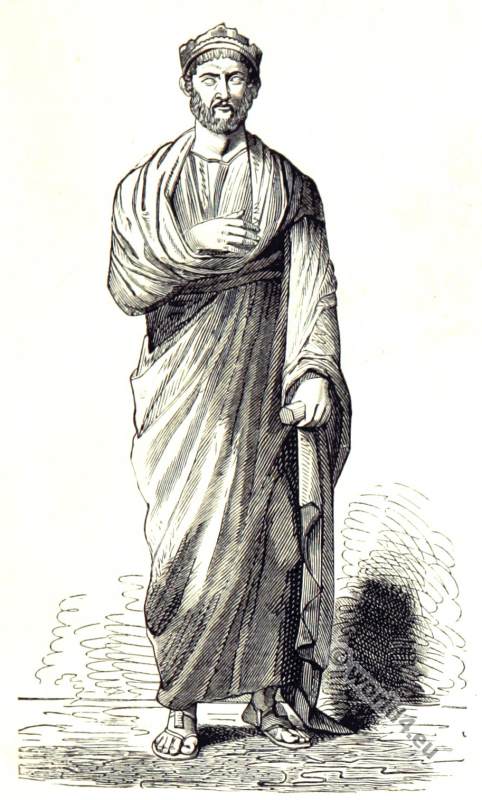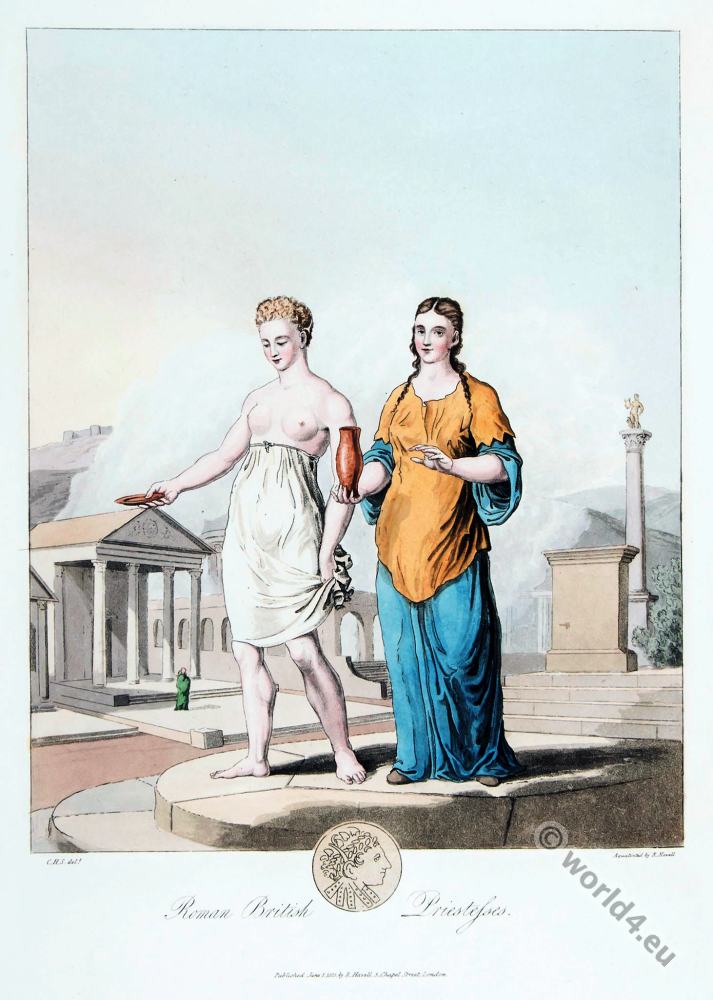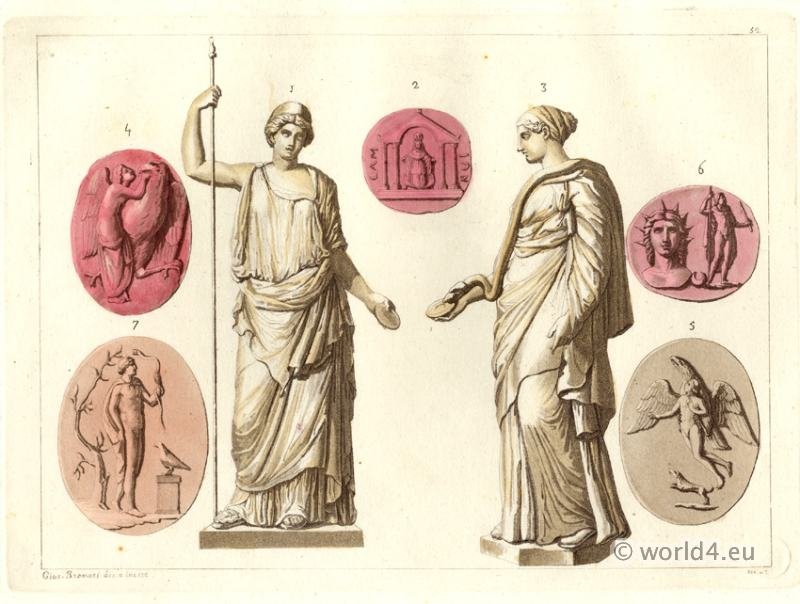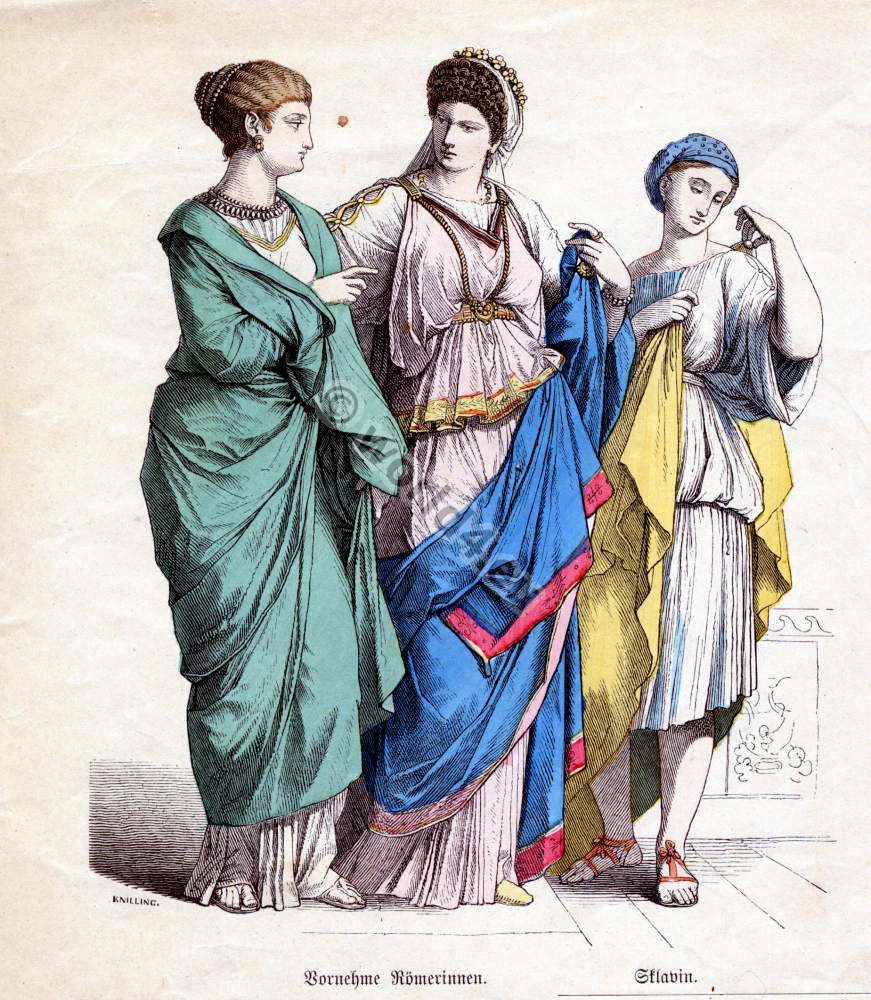Costume of the Roman Empire 31 B.C.- 476 A.D.
Roman senator.
This colorful picture breathes with the spirit of Rome at the height of its glory. The figure symbolizes the two characteristics that made Rome great statesmanship and military power. The entire scene, from the bench to the elaborately embossed breastplate of the soldier, is resplendent with the wealth and ornateness that came from the spoils of conquest.
The senator’s toga is a much later model than either of those shown in Plates 13 and 14. It is longer, narrower, and employs a more complicated draping. The shape of the garment in the picture is still that of a segment of a circle, but by now it has reached the surprising length of about twenty-four feet while the width has narrowed to about four and one-half feet. It is also necessary to say that, according to some authorities, other shapes had come into use. One writer states that the imperial toga was almost circular in shape, with the sides of the circle cut into the form of an unequal hexagon. It is almost impossible to make this clear without the use of a diagram, but it will suffice to say that, when this hexagon was doubled, it was still essentially a semicircle with tv/o edges instead of one, highly complicating the decorative effect.
Returning to the draping of the figure in the picture, it is not too complicated to describe. It is begun in exactly the same manner as the simpler types already shown in earlier plates, with the material hung over the left arm, the point almost touching the ground in front. The excess is then brought across the back, allowing it to hang low before bringing it over the right shoulder and arm, giving the sleeve effect seen on the figure. The next step leads across the chest and around the back again, this time crossing high under the right arm. Once again the material is draped around the chest, over the the left shoulder, and around the back, this time crossing the right side low, almost to the hip. Crossing the chest for the third and last time, the other tip ends over the left arm and can be seen in the plate hanging down to about the hip line.
Roman general.
The Roman General requires less explanation. His helmet, probably of embossed bronze, is crested with dyed horsehair. The cuirass, or breastplate of Roman armor was often a work of art as well as a means of protection. When worn by more important personages, they usually displayed all the skill of the fine metalworker. Although the basic form was usually of brass or bronze, the embossing, designing, and configuring that is to be seen on the example in the picture was often of gold and silver and painstakingly wrought. The groin, hips, and biceps were further protected by heavy leather or metal tabs that can be seen forming the skirted effect.
It will be noted that the General wears a simple tunic beneath the armor to ease the contact of the metal with his body. The scarlet paludamentum, brooched and slung over the left shoulder, adds further zest to an already spectacular costume.
Roman leather craft vied with their brilliant metal work. The soft sandalboots on the soldier and the trim shoes on the senator attest this. The gladiator’s gauntlet strapped about the soldier’s burly right wrist is of further interest.
Source: Museum Extension Project.

Related
Discover more from World4 Costume Culture History
Subscribe to get the latest posts sent to your email.

